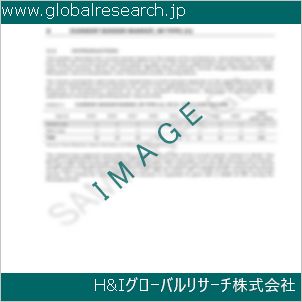1. Preface
1.1. Market and Segment Definitions
1.2. Market Taxonomy
1.3. Research Methodology
1.4. Assumption and Acronyms
2. Executive Summary
2.1. Global Refueling Aircraft Market Overview
2.2. Regional Outline
2.3. Industry Outline
2.4. Market Dynamics Snapshot
2.5. Competition Blueprint
3. Market Dynamics
3.1. Macro-economic Factors
3.2. Drivers
3.3. Restraints
3.4. Opportunities
3.5. Key Trends
3.6. Regulatory Framework
4. Associated Industry and Key Indicator Assessment
4.1. Parent Industry Overview – Industry Automation Overview
4.2. Ecosystem Analysis
4.3. Pricing Analysis
4.4. Technology Roadmap Analysis
4.5. Industry SWOT Analysis
4.6. Porter Five Forces Analysis
5. Global Refueling Aircraft Market Analysis, by Component
5.1. Refueling Aircraft Market Size (US$ Mn) Analysis & Forecast, by Component, 2017–2031
5.1.1. Aviation Refueler
5.1.1.1. 7000-25,000 Liter Aviation Refueler
5.1.1.2. 25,001-50,000 Liter Aviation Refueler
5.1.2. Dispenser
5.1.2.1. Hydrant Dispenser
5.1.2.2. Mini Hydrant
5.1.2.3. Others
5.1.3. Refueling Pod
5.1.4. Probe & Drogue
5.1.5. Others
5.2. Market Attractiveness Analysis, by Component
6. Global Refueling Aircraft Market Analysis, by Refueling Medium
6.1. Refueling Aircraft Market Size (US$ Mn) Analysis & Forecast, by Refueling Medium, 2017–2031
6.1.1. Air-to-Air Refueling
6.1.1.1. Flying Boom Method
6.1.1.2. Probe & Drogue Method
6.1.1.3. Others
6.1.2. Tanking Method
6.2. Market Attractiveness Analysis, by Refueling Medium
7. Global Refueling Aircraft Market Analysis, by Aircraft Type
7.1. Refueling Aircraft Market Size (US$ Mn) Analysis & Forecast, by Aircraft Type, 2017–2031
7.1.1. Commercial Airplane
7.1.2. Military Airplane
7.1.2.1. Combat Aircraft
7.1.2.2. Non-combat Aircraft
7.1.3. Helicopter
7.2. Market Attractiveness Analysis, by Aircraft Type
8. Global Refueling Aircraft Market Analysis and Forecast, by Region
8.1. Refueling Aircraft Market Size (US$ Mn) Analysis & Forecast, by Region, 2017–2031
8.1.1. North America
8.1.2. Europe
8.1.3. Asia Pacific
8.1.4. Middle East & Africa
8.1.5. South America
8.2. Market Attractiveness Analysis, by Region
9. North America Refueling Aircraft Market Analysis and Forecast
9.1. Market Snapshot
9.2. Refueling Aircraft Market Size (US$ Mn) Analysis & Forecast, by Component, 2017–2031
9.2.1. Aviation Refueler
9.2.1.1. 7000-25,000 Liter Aviation Refueler
9.2.1.2. 25,001-50,000 Liter Aviation Refueler
9.2.2. Dispenser
9.2.2.1. Hydrant Dispenser
9.2.2.2. Mini Hydrant Dispenser
9.2.2.3. Others
9.2.3. Refueling Pod
9.2.4. Probe & Drogue
9.2.5. Others
9.3. Refueling Aircraft Market Size (US$ Mn) Analysis & Forecast, by Refueling Medium, 2017–2031
9.3.1. Air-to-Air Refueling
9.3.1.1. Flying Boom Method
9.3.1.2. Probe & Drogue Method
9.3.1.3. Others
9.3.2. Tanking Method
9.4. Refueling Aircraft Market Size (US$ Mn) Analysis & Forecast, by Aircraft Type, 2017–2031
9.4.1. Commerical Airplane
9.4.2. Military Airplane
9.4.2.1. Combat Aircraft
9.4.2.2. Non-combat Aircraft
9.4.3. Helicopter
9.5. Refueling Aircraft Market Size (US$ Mn) Analysis & Forecast, by Country, 2017–2031
9.5.1. U.S.
9.5.2. Canada
9.5.3. Rest of North America
9.6. Market Attractiveness Analysis
9.6.1. By Component
9.6.2. By Refueling Medium
9.6.3. By Aircraft Type
9.6.4. By Country
10. Europe Refueling Aircraft Market Analysis and Forecast
10.1. Market Snapshot
10.2. Refueling Aircraft Market Size (US$ Mn) Analysis & Forecast, by Component, 2017–2031
10.2.1. Aviation Refueler
10.2.1.1. 7000-25,000 Liter Aviation Refueler
10.2.1.2. 25,001-50,000 Liter Aviation Refueler
10.2.2. Dispenser
10.2.2.1. Hydrant Dispenser
10.2.2.2. Mini Hydrant Dispenser
10.2.2.3. Others
10.2.3. Refueling Pod
10.2.4. Probe & Drogue
10.2.5. Others
10.3. Refueling Aircraft Market Size (US$ Mn) Analysis & Forecast, by Refueling Medium, 2017–2031
10.3.1. Air-to-Air Refueling
10.3.1.1. Flying Boom Method
10.3.1.2. Probe & Drogue Method Others
10.3.2. Tanking Method
10.4. Refueling Aircraft Market Size (US$ Mn) Analysis & Forecast, by Aircraft Type, 2017–2031
10.4.1. Commerical Airplane
10.4.2. Military Airplane
10.4.2.1. Combat Aircraft
10.4.2.2. Non-combat Aircraft
10.4.3. Helicopter
10.5. Refueling Aircraft Market Size (US$ Mn) Analysis & Forecast, by Country and Sub-region, 2017–2031
10.5.1. U.K.
10.5.2. Germany
10.5.3. France
10.5.4. Rest of Europe
10.6. Market Attractiveness Analysis
10.6.1. By Component
10.6.2. By Refueling Medium
10.6.3. By Aircraft Type
10.6.4. By Country/Sub-region
11. Asia Pacific Refueling Aircraft Market Analysis and Forecast
11.1. Market Snapshot
11.2. Refueling Aircraft Market Size (US$ Mn) Analysis & Forecast, by Component, 2017–2031
11.2.1. Aviation Refueler
11.2.1.1. 7000-25,000 Liter Aviation Refueler
11.2.1.2. 25,001-50,000 Liter Aviation Refueler
11.2.2. Dispenser
11.2.2.1. Hydrant Dispenser
11.2.2.2. Mini Hydrant Dispenser
11.2.2.3. Others
11.2.3. Refueling Pod
11.2.4. Probe & Drogue
11.2.5. Others
11.3. Refueling Aircraft Market Size (US$ Mn) Analysis & Forecast, by Refueling Medium, 2017–2031
11.3.1. Air-to-Air Refueling
11.3.1.1. Flying Boom Method
11.3.1.2. Probe & Drogue Method Others
11.3.2. Tanking Method
11.4. Refueling Aircraft Market Size (US$ Mn) Analysis & Forecast, by Aircraft Type, 2017–2031
11.4.1. Commerical Airplane
11.4.2. Military Airplane
11.4.2.1. Combat Aircraft
11.4.2.2. Non-combat Aircraft
11.4.3. Helicopter
11.5. Refueling Aircraft Market Size (US$ Mn) Analysis & Forecast, by Country and Sub-region, 2017–2031
11.5.1. China
11.5.2. Japan
11.5.3. India
11.5.4. South Korea
11.5.5. ASEAN
11.5.6. Rest of Asia Pacific
11.6. Market Attractiveness Analysis
11.6.1. By Component
11.6.2. By Refueling Medium
11.6.3. By Aircraft Type
11.6.4. By Country/Sub-region
12. Middle East & Africa Refueling Aircraft Market Analysis and Forecast
12.1. Market Snapshot
12.2. Refueling Aircraft Market Size (US$ Mn) Analysis & Forecast, by Component, 2017–2031
12.2.1. Aviation Refueller
12.2.1.1. 7000-25,000 Liter Aviation Refueler
12.2.1.2. 25,001-50,000 Liter Aviation Refueler
12.2.2. Dispenser
12.2.2.1. Hydrant Dispenser
12.2.2.2. Mini Hydrant Dispenser
12.2.2.3. Others
12.2.3. Refueling Pod
12.2.4. Probe & Drogue
12.2.5. Others
12.3. Refueling Aircraft Market Size (US$ Mn) Analysis & Forecast, by Refueling Medium, 2017–2031
12.3.1. Air-to-Air Refueling
12.3.1.1. Flying Boom Method
12.3.1.2. Probe & Drogue Method Others
12.3.2. Tanking Method
12.4. Refueling Aircraft Market Size (US$ Mn) Analysis & Forecast, by Aircraft Type, 2017–2031
12.4.1. Commerical Airplane
12.4.2. Military Airplane
12.4.2.1. Combat Aircraft
12.4.2.2. Non-combat Aircraft
12.4.3. Helicopter
12.5. Refueling Aircraft Market Size (US$ Mn) Analysis & Forecast, by Country and Sub-region, 2017–2031
12.5.1. GCC
12.5.2. South Africa
12.5.3. Rest of Middle East & Africa
12.6. Market Attractiveness Analysis
12.6.1. By Component
12.6.2. By Refueling Medium
12.6.3. By Aircraft Type
12.6.4. By Country/Sub-region
13. South America Refueling Aircraft Market Analysis and Forecast
13.1. Market Snapshot
13.2. Refueling Aircraft Market Size (US$ Mn) Analysis & Forecast, by Component, 2017–2031
13.2.1. Aviation Refueller
13.2.1.1. 7000-25,000 Liter Aviation Refueler
13.2.1.2. 25,001-50,000 Liter Aviation Refueler
13.2.2. Dispenser
13.2.2.1. Hydrant Dispenser
13.2.2.2. Mini Hydrant Dispenser
13.2.2.3. Others
13.2.3. Refueling Pod
13.2.4. Probe & Drogue
13.2.5. Others
13.3. Refueling Aircraft Market Size (US$ Mn) Analysis & Forecast, by Refueling Medium, 2017–2031
13.3.1. Air-to-Air Refueling
13.3.1.1. Flying Boom Method
13.3.1.2. Probe & Drogue Method Others
13.3.2. Tanking Method
13.4. Refueling Aircraft Market Size (US$ Mn) Analysis & Forecast, by Aircraft Type, 2017–2031
13.4.1. Commerical Airplane
13.4.2. Military Airplane
13.4.2.1. Combat Aircraft
13.4.2.2. Non-combat Aircraft
13.4.3. Helicopter
13.5. Refueling Aircraft Market Size (US$ Mn) Analysis & Forecast, by Country and Sub-region, 2017–2031
13.5.1. Brazil
13.5.2. Rest of South America
13.6. Market Attractiveness Analysis
13.6.1. By Component
13.6.2. By Refueling Medium
13.6.3. By Aircraft Type
13.6.4. By Country/Sub-region
14. Competition Assessment
14.1. Global Refueling Aircraft Market Competition Matrix – a Dashboard View
14.1.1. Global Refueling Aircraft Market Company Share Analysis, by Value (2022)
14.1.2. Technological Differentiator
15. Company Profiles (Global Manufacturers/Suppliers)
15.1. Lockheed Martin
15.1.1. Overview
15.1.2. Product Portfolio
15.1.3. Sales Footprint
15.1.4. Key Subsidiaries or Distributors
15.1.5. Strategy and Recent Developments
15.1.6. Key Financials
15.2. Eaton Corporation
15.2.1. Overview
15.2.2. Product Portfolio
15.2.3. Sales Footprint
15.2.4. Key Subsidiaries or Distributors
15.2.5. Strategy and Recent Developments
15.2.6. Key Financials
15.3. Refuel International
15.3.1. Overview
15.3.2. Product Portfolio
15.3.3. Sales Footprint
15.3.4. Key Subsidiaries or Distributors
15.3.5. Strategy and Recent Developments
15.3.6. Key Financials
15.4. Cobham Plc
15.4.1. Overview
15.4.2. Product Portfolio
15.4.3. Sales Footprint
15.4.4. Key Subsidiaries or Distributors
15.4.5. Strategy and Recent Developments
15.4.6. Key Financials
15.5. GE Aviation Systems
15.5.1. Overview
15.5.2. Product Portfolio
15.5.3. Sales Footprint
15.5.4. Key Subsidiaries or Distributors
15.5.5. Strategy and Recent Developments
15.5.6. Key Financials
15.6. Fluid Transfer International
15.6.1. Overview
15.6.2. Product Portfolio
15.6.3. Sales Footprint
15.6.4. Key Subsidiaries or Distributors
15.6.5. Strategy and Recent Developments
15.6.6. Key Financials
15.7. OMEGA Air Refueling
15.7.1. Overview
15.7.2. Product Portfolio
15.7.3. Sales Footprint
15.7.4. Key Subsidiaries or Distributors
15.7.5. Strategy and Recent Developments
15.7.6. Key Financials
15.8. AFS Aviation Fuel Services GmbH
15.8.1. Overview
15.8.2. Product Portfolio
15.8.3. Sales Footprint
15.8.4. Key Subsidiaries or Distributors
15.8.5. Strategy and Recent Developments
15.8.6. Key Financials
15.9. Garsite LLC
15.9.1. Overview
15.9.2. Product Portfolio
15.9.3. Sales Footprint
15.9.4. Key Subsidiaries or Distributors
15.9.5. Strategy and Recent Developments
15.9.6. Key Financials
15.10. Titan Aviation
15.10.1. Overview
15.10.2. Product Portfolio
15.10.3. Sales Footprint
15.10.4. Key Subsidiaries or Distributors
15.10.5. Strategy and Recent Developments
15.10.6. Key Financials
15.11. Marshal Aerospace & Defense
15.11.1. Overview
15.11.2. Product Portfolio
15.11.3. Sales Footprint
15.11.4. Key Subsidiaries or Distributors
15.11.5. Strategy and Recent Developments
15.11.6. Key Financials
16. Go to Market Strategy
16.1. Identification of Potential Market Spaces
16.2. Preferred Sales & Marketing Strategy
❖ 免責事項 ❖
http://www.globalresearch.jp/disclaimer












